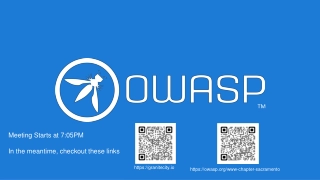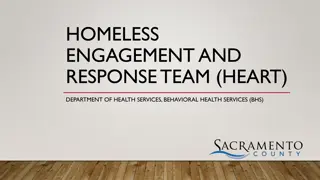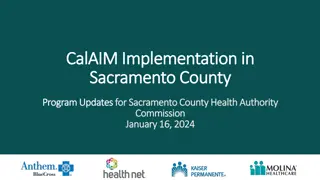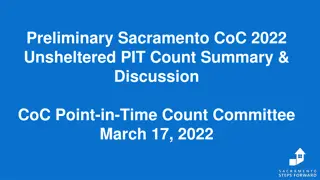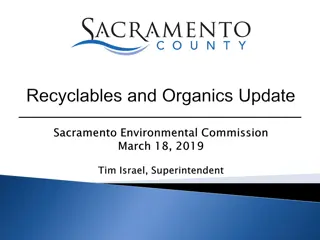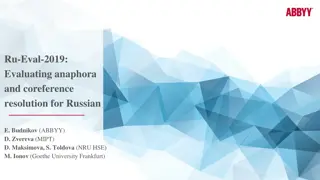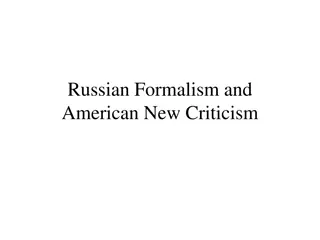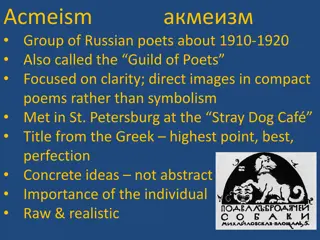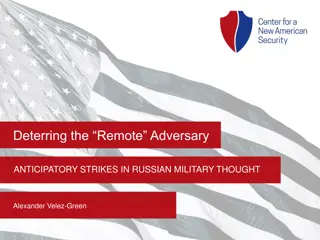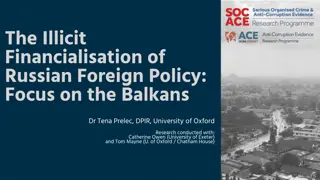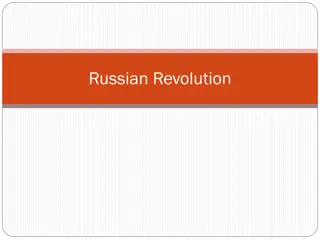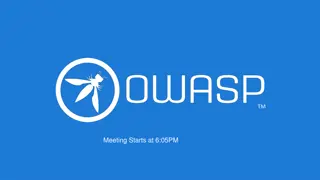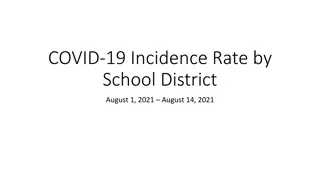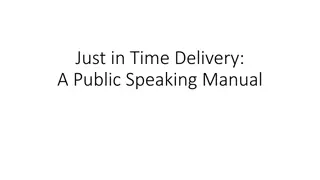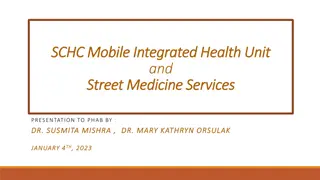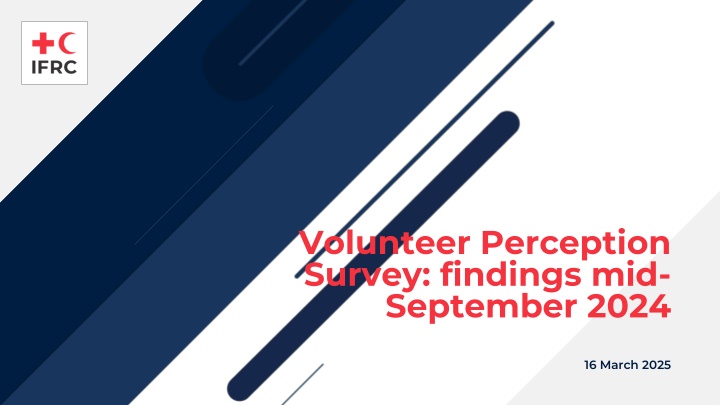
Supporting Russian-speaking Community in Sacramento County
"The project 'Hope for the Future' focuses on suicide prevention within the Russian-speaking community in Sacramento County by offering tailored outreach activities and support services. With over 150,000 immigrants from the former USSR residing in the county, the initiative addresses cultural, language, and societal challenges impacting mental well-being. Explore the unique needs and barriers faced by this diverse community."
Download Presentation

Please find below an Image/Link to download the presentation.
The content on the website is provided AS IS for your information and personal use only. It may not be sold, licensed, or shared on other websites without obtaining consent from the author. If you encounter any issues during the download, it is possible that the publisher has removed the file from their server.
You are allowed to download the files provided on this website for personal or commercial use, subject to the condition that they are used lawfully. All files are the property of their respective owners.
The content on the website is provided AS IS for your information and personal use only. It may not be sold, licensed, or shared on other websites without obtaining consent from the author.
E N D
Presentation Transcript
Volunteer Perception Survey: findings mid- September 2024 16 March 2025 Internal
METHODOLOGY This report summarizes the responses of 3,790 Red Cross/Red Crescent volunteers across the Africa region who took part in a perceptions survey between mid-August and mid-September. An online survey was shared with all National Societies in the Africa region, primarily via email in 4 languages. Perceptions from 30 National Societies are included in the analysis. The results below are indicative rather than representative due to the nature of convenience sampling. Results should not be considered representative of the entire Africa region. The results can be indicative for perceptions of volunteers and perceptions of volunteers about their communities. 2 Internal
Nigeria Kenya Uganda Rwanda Tanzania, United Republic of Zambia Benin Democratic Republic of Congo Liberia Mali Burundi Republic of Congo Gambia C te d'Ivoire South Africa Cameroon Central African Republic Gabon Senegal Ghana Togo Niger Botswana Namibia Angola Ethiopia Lesotho Malawi Zimbabwe Burkina Faso 1337 848 245 217 216 159 130 116 93 SUBMISSIONS 71 59 58 54 51 33 19 16 15 11 7 7 3 3 3 2 2 2 1 1 1 3 Internal
COMMUNITY PERCEPTIONS AS PERCEIVED BY VOLUNTEERS 10 Internal
DO PEOPLE KNOW ABOUT MPOX? 11 Internal
MPOX TRANSMISSION 12 Internal
CONCERNS ABOUT MPOX 13 Internal
EFFECTIVENESS MEASURES 14 Internal
ACCESS TO HEALTHCARE 15 Internal
RUMOURS It is a disease that is very dangerous and kills quickly It is a disease created by the Western world to get rid of Africans It is a disease created by vaccine laboratories in the Western world to become rich Mpox is only spread by people who work with or eat monkeys Mpox is a curse from God Mpox is just like COVID-19 Mpox only affects men who have sex with men 16 Internal
TRUSTED INFORMATION SOURCES 17 Internal
PREFERRED INFORMATION CHANNEL 18 Internal
SUFFICIENT TRAINING & SUPPORT When asked what the RCRC could do to better support the communities, the answers given by all 3231 volunteers all came down to this: RCRC volunteers should receive more training on Mpox, so that they can provide the communities with comprehensive awareness raising, through radio campaigns, door-to-door visits and community meetings on how to protect oneself from getting Mpox. 19 Internal
Recommendations for action 20 Internal
ADDRESSING ROUT CAUSES OF RUMOURS Address the root cause of the rumors Address the root cause of the rumors Why it works: Why it works: rumors often arise from fear, misinformation, or mistrust of authorities. Understanding the underlying concerns can help shape our response. Action: Action: conduct listening sessions or focus groups to understand why people believe the rumors. Is it related to historical mistrust of health interventions, or are there gaps in accessible health information? We can then tailor messages to address these specific concerns. 21 Internal
ENGAGING & TRAIN THE RIGHT PEOPLE Leverage trusted community leaders and community volunteers Leverage trusted community leaders and community volunteers Why it works: Why it works: communities in the region place significant trust in local leaders such as chiefs, religious leaders, traditional healers, and community volunteers. Action: Action: engage and educate these trusted people, providing them with factual, clear, and concise training and information about Mpox. Once they are well-informed, they can share accurate information in a culturally resonant way. Co Co- -create solutions with the community create solutions with the community Why it works: Why it works: top-down approaches can foster resistance, whereas co-creating solutions promotes ownership and trust. Action: Action: engage community members in discussions about how best to stop the spread of misinformation. Allow them to suggest communication strategies and adapt our (health) interventions based on their feedback. 22 Internal
WAYS AND CHANNELS OF COMMUNICATION Utilize storytelling and suitable communication channels (e.g., radio, mobile cinema) Utilize storytelling and suitable communication channels (e.g., radio, mobile cinema) Why it works: Why it works: communities in the region often rely on oral traditions, and stories can be a powerful means of communication. By embedding information within narratives or parables that resonate with local experiences, people are more likely to absorb and remember. Action: Action: create storylines, radio or cinema dramas, or public plays that depict how Mpox spreads, how it doesn't, and what individuals can do to protect themselves. Use local languages and relatable characters. Use mobile technology and social media Use mobile technology and social media Why it works: Why it works: SMS and social media platforms like WhatsApp, Telegram and Facebook are widely used for communication in more urban African contexts. Action: Action: send text messages with myth-busting facts about Mpox or use short, shareable videos in local languages debunking common myths. Work with local influencers on these platforms to amplify the message. Visual and practical demonstrations Visual and practical demonstrations Why it works: Why it works: visual learning is effective, especially in areas where literacy levels may vary. Practical demonstrations or visual aids help make complex information easier to understand. Action: Action: use simple posters, videos, or in-person demonstrations that show how Mpox spreads (e.g., through direct contact) and how it doesn t (e.g., through food or air). Public health workers and RCRC volunteers can give demonstrations in community meetings or health centers. 23 Internal

